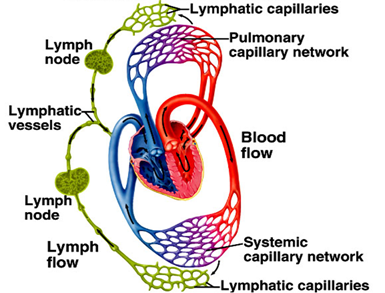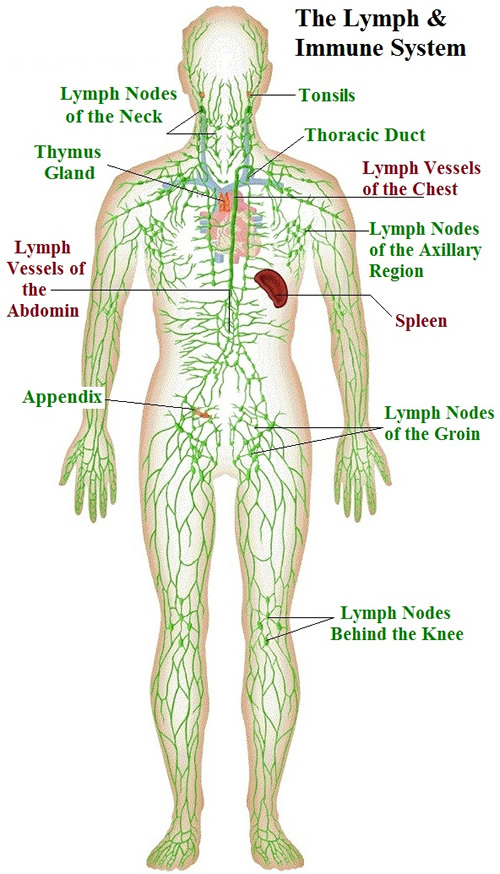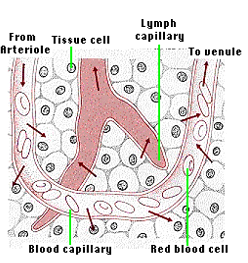
Tissue Fluid and Lymphatic System:

10% of its fluid escape into the surrounding tissues, as blood proceeds through the capillaries and is known as tissue fluid. Chemicals such as glucose and hormones are carried by this fluid to the cells of the body that are not next to the capillary. It then removes the waste products like urea and CO2. The overall effect is to ensure that the tissue fluid is constantly on the move and so every cell in the body receives a fresh supply of nutrients.
Not all of the fluid forced out of the capillaries is returned by osmosis and a network of vessels known as the lymphatic system collects this excess fluid and returns it to the circulatory system. This system is known as the lymphatic system. This fluid – lymph – flows through wider and wider vessels which contain valves to ensure a one-way flow, before it is returned to the blood in the vena cava, just outside the right atrium
Lymph is colourless liquid connective tissue. It is blood, minus RBCs, platelets and some plasma proteins. The lymphatic system has no pump, so lymph must be moved through vessels by the squeezing of skeletal muscles. Lymph passes through thin-walled lymph capillaries present in the tissue spaces. Each lymph capillary is lined by the endothelium of thin and flat cells. They are interwoven with blood vessels but are not connected to them. They are blind at one end and wider than blood capillaries. These lymph vessels join together to form wider lymphatic vessels.
The two main lymphatic vessels are thoracic or left lymphatic duct and right lymphatic duct. The thoracic duct is the main collecting duct of the lymphatic system. It collects lymph from the left side of the head, neck, chest left upper extremity and the entire body below the ribs. The lymphatic vessel coming from the intestine contains absorbed fat. Right lymphatic duct drains lymph from the upper right side of the body. Lymphoid tissues are present in the walls of the trachea and larger bronchi.

Lymph Nodes:

The lymph vessels pass through small bean-shaped enlargements (organs) called lymph nodes, which produce one type of white blood cell (lymphocytes) which are an important source of antibodies and help us to fight infection.
- Lymph nodes are scattered throughout the body but they are maximum at the neck, armpit, and groin.
- Examples of lymph nodes are the tonsils, the appendix, the spleen, and the thymus gland. a large aggregation of lymph node called Peyer’s patches are present in mucosa and submucosa of the small intestine.
Functions of the Lymphatic System:
- They act as filters as macrophages of lymph nodes remove bacteria, foreign materials, and cell debris.
- They also produce lymphocytes and antibodies.
- The lymphatic vessel coming from the intestine contains absorbed fat.
- They drain excess tissue fluid from extracellular space back into the blood